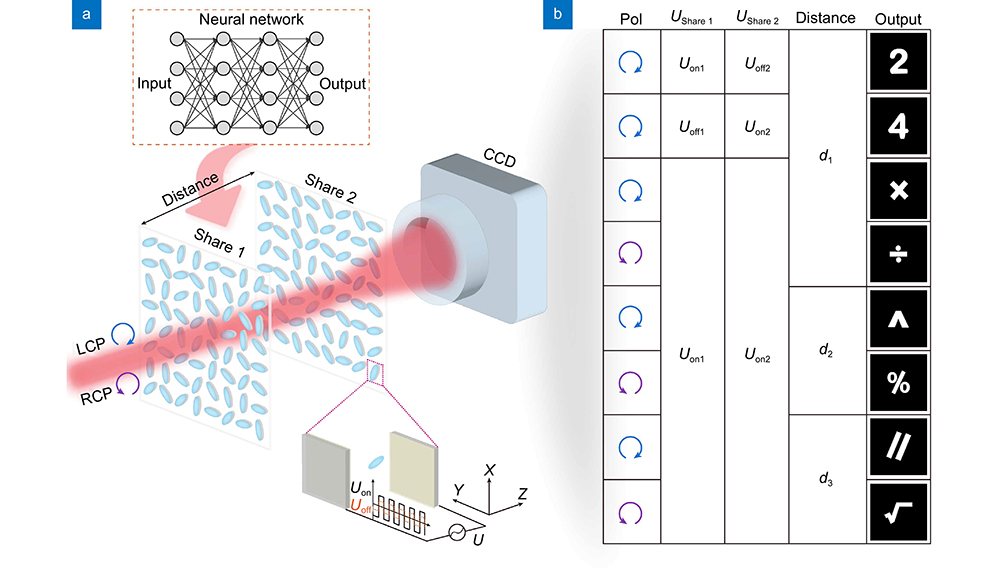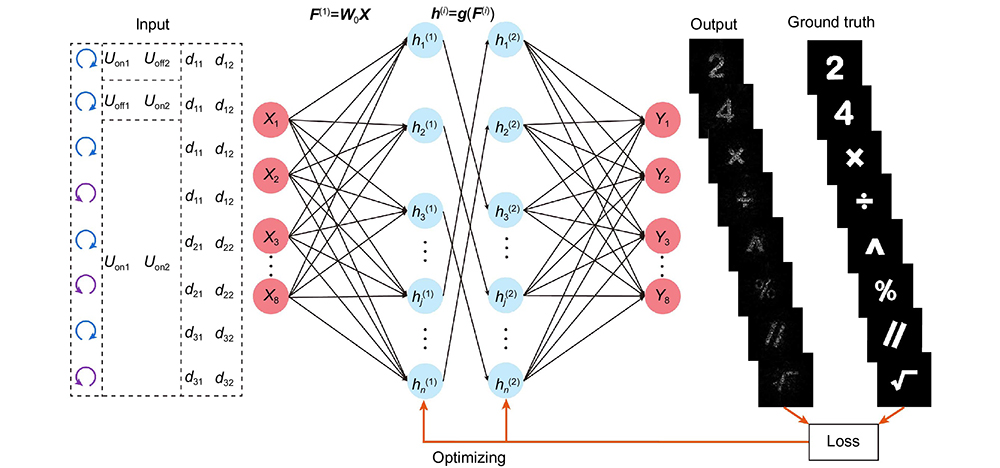Keyao Li, Yiming Wang, Dapu Pi, Baoli Li, Haitao Luan, Xinyuan Fang, Peng Chen, Yanqing Lu, Min Gu. Multi-dimensional multiplexing optical secret sharing framework with cascaded liquid crystal holograms[J]. Opto-Electronic Advances, 2024, 7(1): 230121
Search by keywords or author
- Opto-Electronic Advances
- Vol. 7, Issue 1, 230121 (2024)

Fig. 1. Illustration diagram of the multi-dimensional multiplexing optical secret sharing framework based on the cascaded LC holograms. (a ) A neural network is adapted to inversely design the phase distribution of the LC holograms and the secret images can be decrypted when the circular polarization light illuminates on the distance-adjustable cascaded LC holograms with appropriate external voltage. (b ) The different secret keys and the corresponding decrypted holographic images.

Fig. 2. Design principle of multi-dimensional multiplexing optical holographic secret sharing framework. The polarization states of the incident light, the imposed external voltage and the moving distance between the two LC holograms are the input parameters of the ANN model. The difference between the reconstructed images and the ideal images is defined as the loss function. Through the back-propagation optimization process, the phase distributions of the two LC holograms are calculated.
Fig. 3. The experimental setup and the diffraction efficiency of the LC holograms. (a ) Optical setup for multi-multiplexing optical holographic secret sharing framework. The grayscale images in the top-left and bottom-right corner are the simulated phase distribution of share 1 and share 2. The reddish-brown images in the zoom-in view are the corresponding polarized micrograph of the fabricated LC holograms. Q-wave plate, quarter-wave plate. (b ) The diffraction efficiency of the LC holograms with different external voltage.
Fig. 4. The experimental demonstration of the designed optical secret sharing framework. (a ) The authentication images decrypted from user 1 and user 2. (b ) The operator images decrypted by the secret keys and the final secret images retrieved from the second decryption.

Set citation alerts for the article
Please enter your email address



